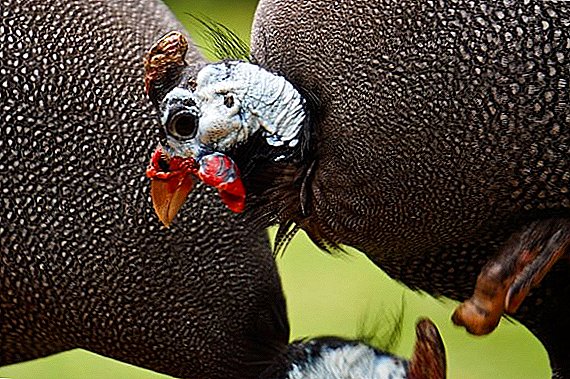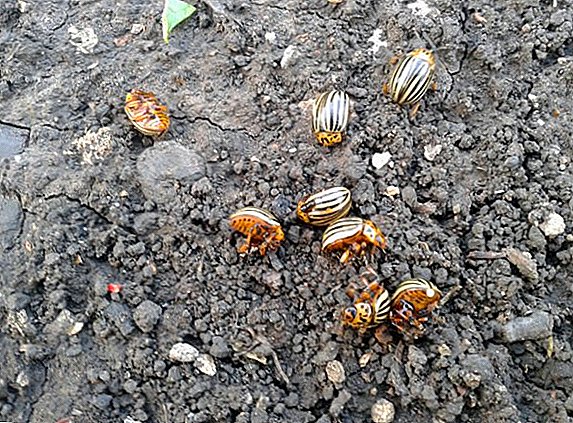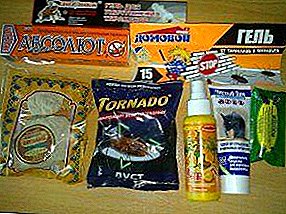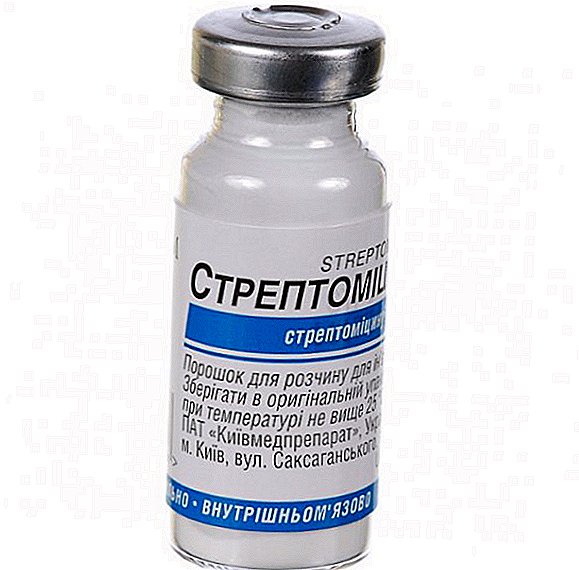 Breeding animals and poultry on farms, and simply in small farms, is sometimes accompanied by a massive loss of livestock or poultry poultry, as a result of infectious diseases. In the past decade and a half, this problem has become particularly relevant. One of the reasons for this phenomenon is the discovery of geographical and trade borders.
Breeding animals and poultry on farms, and simply in small farms, is sometimes accompanied by a massive loss of livestock or poultry poultry, as a result of infectious diseases. In the past decade and a half, this problem has become particularly relevant. One of the reasons for this phenomenon is the discovery of geographical and trade borders.
Now and then in the news there are plots about the forced slaughter of livestock, caused by another disease of cows or chickens. In order to avoid such troubles, and simply for the treatment of many infectious diseases in animals, there is streptomycin, one of the first antibiotics.
Composition, release form, packaging
Streptomycin - salt of organic matter produced by microscopic fungi. White powder, odorless.
Did you know? American microbiologist Zelman Waxman, for the discovery of streptomycin, received in 1952 the Nobel Prize.
Streptomycin for animals is produced in glass vials sealed with a rubber stopper and an aluminum safety cap, weighing 1 g each. 50 vials are packed in a cardboard box, and the instructions for use are also there. The content of streptomycin sulfate in 1 mg of the drug is 760 IU.

Pharmacological properties
The antibiotic belongs to aminoglycosides. It has a wide spectrum of action. It is the first substance in the history of mankind with which it was possible to effectively resist the plague and tuberculosis. The principle of action is based on the suppression of protein synthesis in bacteria.
The properties of streptomycin allow it to be successfully used in the fight against mycobacterium tuberculosis. Destroys the majority of bacteria of the gram-negative and gram-positive types. Well proven in the treatment of staphylococcus, a little worse - streptococcus. It does not act on anaerobic bacteria.
The use of the drug quickly develops bacteria resistance to it. There are microorganisms for which streptomycin is a nutrient medium.
Indications for use
In veterinary medicine, streptomycin sulfate is used in the treatment of meningitis, leptospirosis, pneumonia, post-traumatic infections and blood poisoning after childbirth; malignant catarrhal manifestations, campylobacteriosis and actinomycosis in farm animals and dogs.
Important! Streptomycin is not effective against anaerobic bacteria and viruses. The drug is not used in the treatment of purulent foci, abscesses.
Dosage and administration
The drug is injected under the skin or into the muscle. Prepare a solution for injection as follows: the powder is dissolved in saline or novocaine in the following proportion: 1 g of streptomycin per 1 ml of solvent.

Ready-to-use solution can be stored for a week in the refrigerator. Injections are given twice a day, in the morning and in the evening. The course of treatment is from 4 days to one week.
The tool is used in conjunction with penicillin and sulfonamides. Their combination enhances the effect of injections, and prevents the emergence of resistant strains of bacteria.
The instructions for use of streptomycin veterinary indicated the following dosage for various types of farm animals.
Cattle
Representatives of the cattle family, cows and bulls are given the drug at the rate of 5 mg / kg of weight for adults, and 10 mg / kg of weight for young animals.
We advise you to learn how to deal with such diseases in cows as: pasteurellosis, ketosis, udder swelling, mastitis, leukemia
Small cattle
For adult goats and sheep, the recommended dose is 20 mg kg. In the case of young people, it is necessary to proceed from the indicator of 20 mg / kg of weight.
Horses
The dosage for horses is the same as for cattle: 5 mg / kg for adult animals, 10 mg / kg for foals.

Pigs
Pigs streptomycin is administered in the following dosage: 10 mg of the drug per 1 kg of weight to adult individuals, and 20 mg / 1 kg to piglets.
Did you know? There is an erroneous opinion that pigs love to lie in the mud just for fun; in fact, in this way they relieve themselves of parasites: having dried, the dirt disappears along with the parasites. In addition, mud felting helps them cool off in the heat.
Chickens
For poultry in general and for chickens in particular, streptomycin is used as follows: 30 mg of the drug per 1 kg of mass of adult birds. For chickens (ducklings or turkey poults) take 40 mg of substance per kilogram of weight.
Meat and poultry eggs can be eaten by humans no earlier than after three weeks. Eggs received from birds up to this period can be used as food for animals that are not subject to slaughter in the near future.
Special mention deserves such a common disease in poultry as mycoplasmosis In this case, the drug is mixed into the feed. Doses of streptomycin in mycoplasmosis: 2 g of streptomycin sulfate per 10 kg of grain (maize, feed).

Use this feeding for 5 days, after 7 days the procedure is repeated. Such treatment is relevant only in relation to the initial stage of the disease. A bird with a more severe form of the disease would be better to score.
You will be interested to learn effective methods of treating such diseases of chickens as: coccidiosis, pasteurellosis, diarrhea, colibacteriosis
Precautions and special instructions
There have been cases of dermatitis in cases of repeated contact with the drug. The meat of animals is used in food one week after the end of the course of drug treatment.
If the slaughter was made earlier, you can use carcasses to make bone meal.
Important! If streptomycin was given to a bird as a prophylaxis, in a small dosage, the eggs are edible after four days, the meat - in two weeks.
Milk of farm animals, to which the drug treatment was applied, a person can eat two days after the last injection. Milk received from the cow during the treatment process feeds the animals.

Contraindications and side effects
Intolerance to antibiotics in general, and to aminoglycosides in particular. Renal and cardiovascular failure. You can not combine streptomycin with other aminoglycosides. If an animal is allergic to the medicine, antihistamines are used in recommended doses.
Read also, for what in veterinary medicine use such drugs: "Eleovita", "E-selenium", "Chiktonik", "Deksafort", "Sinestrol", "Enrofloxacin", "Levamizol", "Ivermek", "Tetramizol", " Alben, Ivermectin, Roncoleukin, Biovit-80, Fosprenil, Nitoks Forte
Shelf life and storage conditions
You can store and use the drug for 36 months. The recommended temperature is 0 ... + 25 ° C, out of the reach of children, with normal humidity, without access to direct sunlight.
Take care in time for your animals. By this you will save their life and health for themselves. And in case you are engaged in the cultivation of meat and dairy products for marketing, you will also save considerable funds.

Although lately a lot has been said about the dangers of antibiotics, but the realities of our life are such that without them it is very difficult to preserve the health of both humans and animals. And if we are forced to use antibiotics in the treatment of infections, let's at least do it right.












